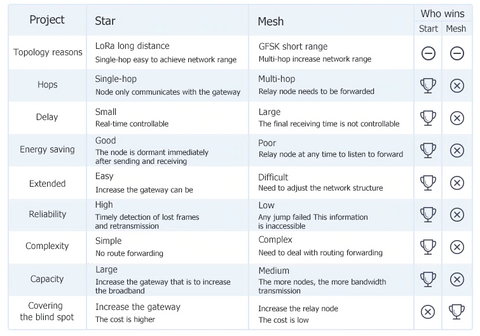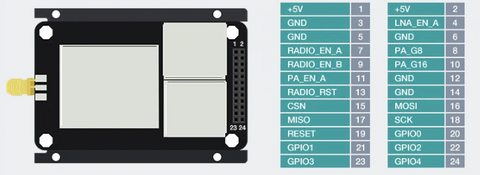
RAK831 and FT2232H Gateway Concentrator Module Kit for LoRa® (based on SX1301)
Sign up for restock notifications

Sign up for restock notifications
The RAK831 is used to achieve a large area of low-cost full coverage IoT integration. It has strong anti-interference, good concealment, and long communication distance
RAK831 is an RF front end of a LoRa® gateway. It is able to receive on different frequency channels at the same time and is able to demonstrate the LoRa® signal without knowledge of the used spreading factor of the sending node.
With the compact design, this is an ideal modular product that helps you realise the whole LoRa system development. With the USB-SPI converter module FT2232, you can quickly develop software on your computer. You can also integrate the concentrator module into your own production product to realise the LoRa gateway function. This is a very economical way to create a LoRa gateway for a huge variety of applications like Smart Grid, intelligent farming, and other IoT applications.
The RAK831 needs a host system like a Raspberry Pi or WisAP (openWRT based) or WisCam for proper operation. The host processor can be a PS or MCU that will be connected to RAK831 via USB or SPI.
Public utilities (gas and other instruments, municipal pipelines, street lamps, landfills), large areas of livestock and agricultural irrigation, extensive layout and harsh weather, hydrology, mountain data collection, mines and remote outdoor operations; they suffer from…
LPWAn is a very good solution to the above problems
Complex urban environments can transfer 3 km and open area transmissions can be up to 15 km, penetrating harsh environments to transmit signals.
Sleep/low power mode means power consumption is very low
Supports narrowband data transmission resulting in low cost of network communications.
For example, 7 LoRa® Gateway modules can cover the Lower Manhattan area
LoRaWAN® communication protocol can handle node roaming, base station capacity management, node authentication and other cellular technology requirements, and because of its openness, a large number of R&D companies in the world continuously update and improve the LoRaWAN communication protocol.
Due to the high range a star topology can be used. Compared Star and Mesh topology, we can see the advantages of LoRaWAN® on the wireless network.



| Operating Voltage | DC 5V |
|---|---|
| Operating Temperature | -40 to 85 |
| Radio Chipset | SX1301
|
| RF Output Power | 23dbm |
| Input Signal | Not more then -13dBm |
| GPS Receiver | Optional |
| Receiver Sensitivity | Up to -142.5dBm (@293bps) |
| SNR Handling | 9dB |
| Control Interface | SPI |
| Dimension | 80mm*50mm*5mm |
| Firmware | Gateway HAL |
| Range | up to 15KM |
- How to connect RAK831 to FT2232HL Quick Start
- Getting Started with RAK831 & Raspberry Pi
- Hackster.io Getting Started Guide